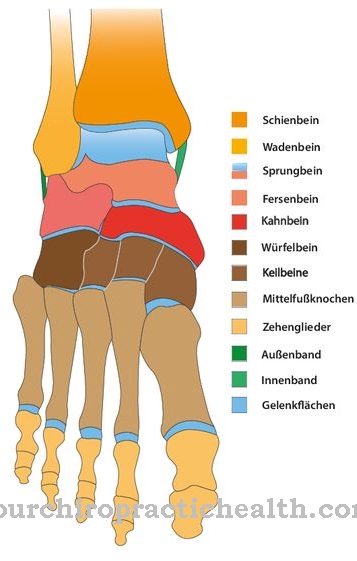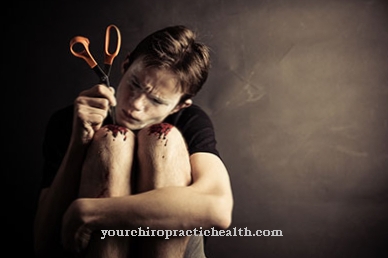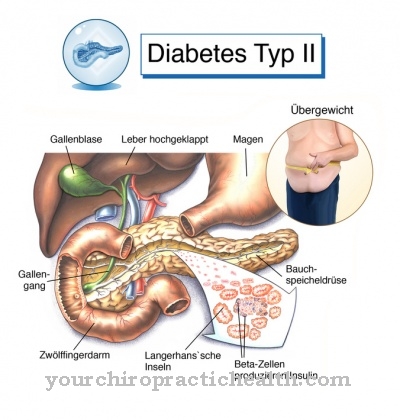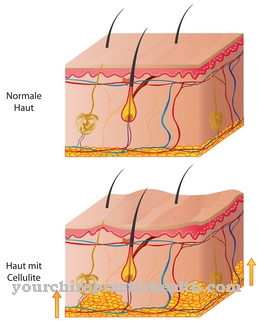The SAPHO syndrome is a disease from the group of rheumatic diseases, which is associated with the cardinal symptoms synovitis, acne, pustulosis, hyperostosis and osteitis. The cause is probably a skin infection. So far, treatment has been on a purely symptomatic basis.
What is SAPHO Syndrome?

© joshya - stock.adobe.com
Rheumatic diseases form a circle of diseases with associated painful conditions of the musculoskeletal system. A multifaceted disease from the rheumatic diseases is the so-called SAPHO syndrome. The name is an acronym made up of the first letters of the characteristic symptoms.
The main symptoms are synovitis, acne, pustulosis, hyperostosis and osteitis. In most cases, the individual symptoms are not immediately identified as a coherent clinical picture due to the variability of expression. The SAPHO syndrome usually affects young women and men.
Neither the incidence nor the prevalence of the syndrome are certain. Since only about 20 cases have been documented within 20 years, a relatively low frequency is assumed. The syndrome is associated with skin infections, psoriasis, sacroiliitis, intestinal diseases and Lyme disease.
causes
The exact etiology of the SAPHO syndrome is not yet known. Due to the variability of the disease, a uniform history of development is not to be expected. Since all cases of the syndrome appear to be associated with dermatological symptoms, a causal skin infection is currently the most likely cause.
In the etiopathogenesis, there is speculation about a causal subclinical infection in the form of acne, for example, from which an immune-reactive osteomyelitis could develop. The concomitant symptomatic periostitis and the phased bone pain in the patient could also be due to this cause.
The same goes for the neighboring synovitis. How the relationships could look in detail has not been conclusively clarified. Genetic factors could possibly also be involved in the development of the disease. At least that is what the animal model cmo mouse suggests, which documented familial clusters.
Symptoms, ailments & signs
Patients with SAPHO syndrome suffer from symptoms of varying degrees and great variability. The cardinal symptoms are the acronym-forming symptoms of synovitis, acne, pustulosis, hyperostosis and osteitis. In many cases, the symptoms are very different in different patients.
The main symptoms are usually associated with other signs of illness, in particular fatigue, severe pain symptoms or gastrointestinal symptoms. Patients are often disfigured because of their dermal symptoms. Because of their pain, their ability to participate in everyday life is also limited.
Most pustulosis in those affected is concentrated in the hands and feet. Hyperostoses are primarily found in the sternoclavicular joint. Ostitis can be expressed as spondylarthropathy, spondylodiscitis, chronic recurrent multifocal osteomyelitis or pustular arthroosteitis. Not every patient has to have all of the five cardinal symptoms.
Diagnosis & course of disease
An increase in the HLA-B8 and HLA-B27 markers is not a mandatory diagnostic criterion for SAPHO syndrome. Only some of the patients show an increase. For the diagnosis, the overview of the symptoms is crucial. In many cases, the variability of the severity makes an early diagnosis difficult.
The diagnosis is based on imaging procedures such as skeletal scintigraphy and MRI, since all laboratory findings in SAPHO syndrome are considered to be less characteristic. Early diagnosis suggests a favorable prognosis. Since the syndrome in its entirety is usually only diagnosed at an advanced stage, an absolutely favorable prognosis is rarely to be expected. In the later stages of the syndrome, the prognosis depends heavily on the symptoms, which can vary greatly from case to case.
Complications
First and foremost, those affected by SAPHO syndrome suffer from severe skin complaints. This can also lead to reduced aesthetics, so that those affected no longer feel good or suffer from inferiority complexes and a significantly reduced self-esteem.
Bullying and teasing can also occur and have a negative effect on the psychological state of the patient, so that the syndrome can lead to psychological upsets or depression. Furthermore, most patients of the syndrome also suffer from exhaustion and permanent fatigue, which, however, cannot be compensated with the help of sleep. Everyday things and activities are also difficult for most of those affected, so that they depend on the help of other people in everyday life.
Most patients are dependent on psychological treatment to alleviate the symptoms. However, medication is also necessary for this syndrome. As a rule, life expectancy is not affected.
When should you go to the doctor?
The SAPHO syndrome must always be treated by a doctor. In the worst case, it can also lead to the death of the person affected if the syndrome is not treated in good time. For this reason, early diagnosis and treatment of the syndrome always have a positive effect on the further course of the disease.
A doctor should be consulted if the patient suffers from very severe acne. This also leads to the formation of pustules on the skin and the skin is usually also affected by redness and itching. In many cases, fatigue also indicates the disease, especially if it occurs over a longer period of time and for no particular reason. However, not all symptoms have to be present to indicate SAPHO syndrome.
The first diagnosis of the syndrome can be made by a general practitioner or by a dermatologist. The life expectancy of the person affected is not limited or reduced by the disease. As a rule, the syndrome can be treated relatively well, so that it is usually completely cured.
Treatment & Therapy
The therapy of SAPHO syndrome has so far been a purely symptomatic treatment. Since the causes have not been conclusively clarified, only the individual symptoms can be treated. So the syndrome is not curable so far. Non-steroidal anti-inflammatory drugs such as NSAIDs are available for symptomatic treatment of patients. In addition, patients usually have to change their lives as part of the treatment and thus, for example, permanently avoid painful stress.
In many cases, physiotherapeutic care has led to an improvement in the symptoms and, above all, the pain symptoms. Since an immunological connection is obvious, immunosuppressive substances such as corticoids are currently also used to treat those affected. Therapeutic approaches using substances such as MTX and colchicine were also described.
Additional therapeutic approaches are offered with bisphosphonates such as zoledronic acid. Individual antibiotics are also currently being tested, for example doxycycline and azithromycin. Interferon therapy can also serve as immunosuppressive therapy. Since the SAPHO syndrome is often perceived by patients as a disfigurement, psychotherapeutic care is provided in addition to physical therapy in individual cases.
In therapy, patients learn to deal with their illness better and to process the experience of the disfigurement. A stabilization of the psychological situation has shown positive effects on the course of the disease in connection with many different illnesses and in individual cases even alleviated subjectively perceived pain problems.
prevention
Although there are now logical speculations about the cause of the SAPHO syndrome, the definitive causes are still not known in detail. Since the etiology has not been clarified, no prophylactic measures are available to date. There is nothing to prevent the syndrome at the moment.
Aftercare
In most cases, those affected with SAPHO syndrome have very few and only very limited direct follow-up measures available. For this reason, those affected with this disease should consult a doctor very early in order to prevent other possible complications and complaints, as it cannot cure independently. Since the SAPHO syndrome is a genetic disease, it can usually not be completely cured.
Therefore, if you want to have children, genetic testing and counseling should always be carried out first in order to prevent the disease from recurring in the descendants. In most cases, the SAPHO syndrome can be relieved well by the measures of physiotherapy or physiotherapy. The person concerned can also do many of the exercises in their own home to prevent the occurrence of other complaints and to accelerate healing.
Most of those affected by SAPHO syndrome are also dependent on taking medication. All the doctor's instructions should be followed, and a doctor should be consulted first if there are any questions or if anything is unclear. The prescribed dosage and regular intake must also be observed.
You can do that yourself
Patients diagnosed with SAPHO syndrome can take various measures to alleviate their symptoms. A sufficient supply of heat to the body, avoidance of drafts and wearing protective clothing in a cold environment are advisable. They promote well-being and avoid possible complications.
The musculoskeletal system must be adequately protected against situations of overload. The daily tasks should be carried out according to the specifications of the organism. If possible, the handling of physical activities or obligations in everyday life should be restructured. They should be redistributed in consultation with people in the immediate vicinity. Exercises and training units from the field of physiotherapy can help to alleviate existing symptoms. These trainings can be used independently at any time by those affected in everyday life. They support the organism and help cope with the disease.
Cognitive therapies can help in dealing with existing pain. Patients report that methods of relaxation are also helpful.The regular use of autogenic training, meditation or yoga have shown that they can be successful as possibilities for self-help. Patients often complain of fatigue. You should allow yourself sufficient rest periods in everyday life and allow the body time to regenerate. To do this, it is also advisable to optimize sleep hygiene.


-durch-folsuremangel.jpg)





















.jpg)



